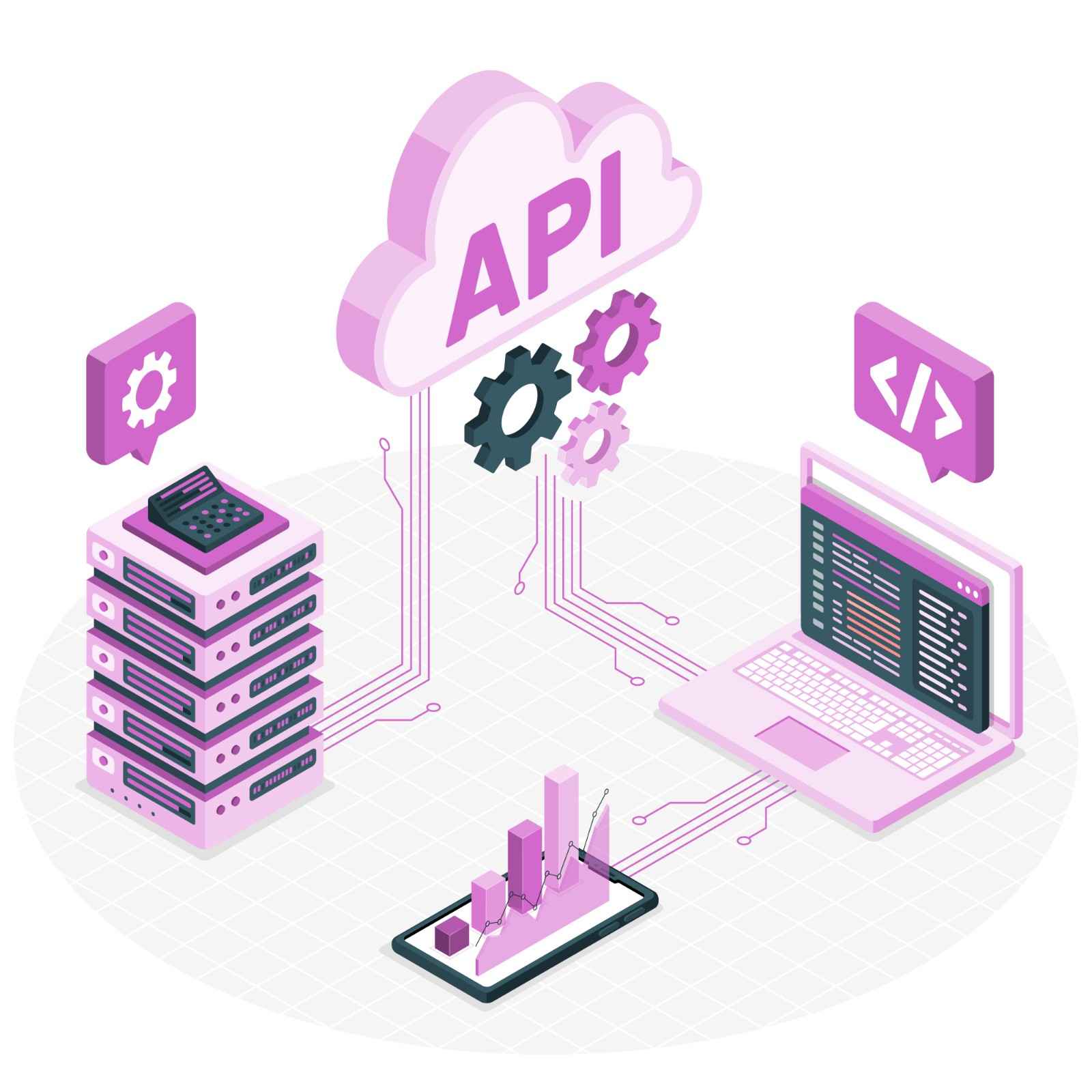
APIs, or Application Programming Interfaces, are one of the critical lines through which any modern web development runs. APIs allow different software systems to communicate and share functionalities, enhancing user experience and simplifying complex tasks. Understanding the workings of APIs in and out has become critical for dynamic and efficient web applications development. This reading: APIs-their operation, advantages, and best practices for implementation.
What Is An API?
An API is the set of rules and protocols for communicating between different software applications. It also specifies how the requests and responses are supposed to be formatted. So instead of having any particular software systems engage each other directly, they relay their communication through the API. APIs can be imagined as messengers who receive requests from someone and, on arrival at a system, deliver that request and return with the system’s response.
For instance, when you use a travel booking website to compare flight prices, the whole website uses APIs to pull together data from different airline databases in real-time.
Types of APIs
Different types of APIs can be defined by how they work according to the functions and access levels:
Web APIs
These are used to get data from and through web servers with all web-based applications.
Examples are REST (Representational State Transfer) and GraphQL APIs.
Open APIs (Public APIs):
Developers and third-party people access without restriction.
Examples are some of the Open APIs like Google Maps API, Twitter API.
Internal APIs (Private APIs):
Restricted to internal usage within organizations, enhancing internal operations,
They are not open for external developers.
Partner APIs:
Shared with specific business partners enabling them to integrate and collaborate.
Example: Payment gateway APIs for e-commerce platforms.
Composite APIs:
Merging two or more APIs to process a combined business case or get data from many APIs in a single request.
The Impact of APIs on Web Development
API stands for Application Programming Interface, and it has drastically changed the way web development is done – giving developers tools to:
Port Integration
APIs help with third-party service and functionality integration without building them from scratch. Examples are:
Payment Gateways like Stripe, PayPal, and Square that offer secure online transaction API;
Maps and Geolocation: Google Maps API that connects something with location-based services;
Social Media: APIs such as Facebook and Instagram allow content sharing and user authentication.
2. Real-Time Data Sharing
The modern applications must have updates in time to engage users better. The following APIs:
Real-time notifications.
Real-time feed of data like stock market updates and sports scores.
Improve User Experiences
APIs enhance highly interactive and personalized environments by:
Extracting user-specific data (like personalized recommendations)
Dynamically updating portions of the website without refreshing its entire content (AJAX-based applications).
4. Multi Platform Functionality
APIs are connective bridges through which applications work well across platforms and devices. For instance: Their kind is an example of Cloud APIs used in data synchronizations between desktop and mobile applications. Similarly, Firebase APIs facilitate the concept of adding ease to backend services for android and iOS apps. 5. Development and Maintenance Simplification
With APIs, we can do the following:
Use prepared significant code aside, thus shortening the time of development.
Maintain modulated separation between front and back ends.
Use of microservices architecture, whereby different services communicate through APIs.
The Benefits of Using APIs in Web Development Efficiency: Quickly develop applications by using available solutions. Less energy wasted on focusing on the unique functionality instead of reinventing the wheel. Scalability: Modularity in the application is easy to achieve. It becomes easy to scale an application with the help of APIs. Interoperability: Diverse systems, all on different technologies, can talk to each other through APIs. Innovation: It allows developers to play and try building on some of the latest APIs through which new functionalities can be developed. Monetizing: It becomes possible for business people to sell APIs to other developers through the creation and maintenance of these paid services.
Adhering to the Best Practices for API Usage
Selecting the Appropriate Type of APIs:
Choose the most appropriate type of API for your project by evaluating the different options that can meet your needs such as REST or GraphQL.
Protect API Access:
Protect your API through OAuth2 authentication as well as prevent misusing and overloading through rate limiting.
Optimize API Calling:
Reduce the number of actual API calls as much as possible through data coupling.
Cache response from server to decrease load and improve performance.
Test and Document APIs:
You should use an application like Postman or Swagger to test your API endpoints.
A well-structured document should be provided for developers in an understandable way, which might include request/response examples and how to handle errors.
Monitor APIs and Maintenance:
API performance and utilization can be gathered and evaluated with an analytics tool.
APIs should be updated regularly for bug fixes as well as new features.
Best APIs in Modern Web Development
These are some of the APIs that are most used by developers-the APIs that cannot be bypassed:
Google APIs: These are the most comprehensive; they go from maps, and into analytics.
REST APIs: Now-a-days, almost all web services are based on them as they are simple and scalable.
GraphQL APIs: These are a fair solution to provide flexibility in the way to query data and fetch only ythe require amount.Twilio API: Provides the service of connecting with the outside world by SMS, voice, and video.
Firebase API: An API that includes authentication, database management, and cloud storage.
API Challenges
Among the benefits of these APIs, you will have some challenges such as: Integration of many APIs requires a complex structure. Dependency risks: Most third-party API usage can create lots of holes if the service abruptly dies. Security weaknesses: Integration of the API poorly can lead to many vulnerable sides. Performance: Well Sighted APIs slow down applications.
Conclusion
APIs are the foundation for modern web development that creates seamless work across integration and real-time access to data and enhancements.

